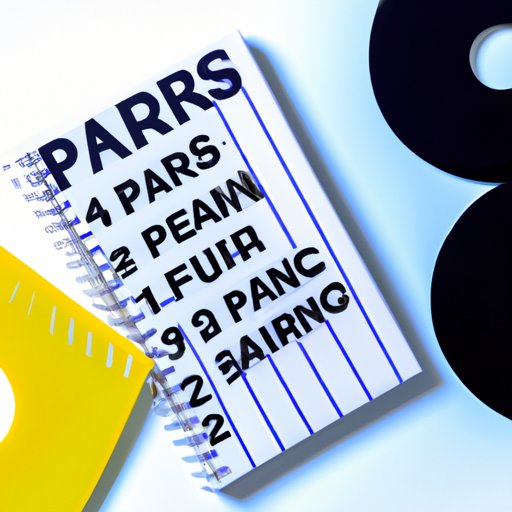
Introduction
When it comes to fitness, many people strive to make progress and achieve their goals. One of the most sought-after achievements in fitness is setting a personal record, or PR. This article will delve into what PR means in fitness, how to achieve it, and how it impacts workouts and progress.
PR: The Ultimate Goal in Fitness and How to Achieve It
A personal record, or PR, is the most weight lifted or fastest time achieved for a particular exercise or activity. It is the ultimate goal for many athletes and fitness enthusiasts. Setting a new PR can be incredibly motivating and rewarding, and is often a sign of progress and growth.
In order to achieve a PR, it is important to set goals and work towards them. This means starting with achievable goals and progressively increasing intensity or resistance over time. Focusing on proper form, progressive overload, and consistency is also key.
Breaking Down PR in Fitness: Understanding What It Means and How It Impacts Your Workouts
PRs can come in many different forms, and can be achieved in a variety of exercises and activities. Examples of different types of PR include achieving a new one-rep max in weightlifting, running a fastest mile, achieving the longest plank, or even completing a certain number of push-ups.
Tracking PRs can have a significant impact on workouts and progress. It can increase motivation, help athletes focus on continual improvement, and lead to better and more effective training. When athletes are able to see their progress through tracking their PRs, they are able to set new goals and work towards them with a greater sense of purpose.
Pushing Through Plateaus: How Focusing on PR Can Take Your Fitness to the Next Level
One of the most common challenges in fitness is hitting a plateau. This is when progress seems to come to a standstill and athletes may feel stuck or like they are not making any progress. However, focusing on PR can help overcome these plateaus by providing a sense of continual progression and growth.
Setting and achieving a personal record can help athletes break through plateaus by providing a new challenge and pushing them to new levels of achievement. This continual progress can help keep athletes motivated and focused on their goals.
The Science Behind PR: How Tracking Your Personal Records Can Help You Reach Your Fitness Goals
Tracking PRs is not just about motivation and continued progress – there is also a scientific basis for why it can be effective. When athletes track their progress, they are able to identify areas of strength and weakness, and tailor their workouts accordingly.
Tracking PRs can also help athletes identify trends and patterns in their training and adaptation. This can lead to more effective programming and better overall performance.
Train Smarter, Not Harder: How PR Can Help You Avoid Injury and Make Progress Safely
Injury prevention is a critical component of any fitness regimen. Focusing on PRs can help athletes train smarter and avoid injury by promoting proper form and progression, and pushing athletes to make progress at a safe and steady pace.
Tracking progress can also help athletes avoid overworking and overtraining, which can lead to injury and burnout. When athletes are able to monitor their progress through tracking PRs, they can adjust their training accordingly and avoid putting undue stress on their bodies.
From Beginner to Beast: Using PR as a Measure of Progress in Your Fitness Journey
Finally, it’s important to note that PRs are not just for experienced athletes and fitness enthusiasts. Anyone of any fitness level can set and achieve personal records and use them as a measure of progress in their fitness journey.
Beginners can use PRs to track progress and achieve goals, such as completing a certain number of push-ups or holding a plank for a specific amount of time. Experienced athletes can continue to make progress and achieve new feats by setting and achieving progressively higher personal records.
Conclusion
Setting a personal record can be an incredibly rewarding achievement in fitness. By setting goals, tracking progress, and focusing on proper form and progression, athletes can work towards achieving PRs and continually improving their workouts and overall fitness.




